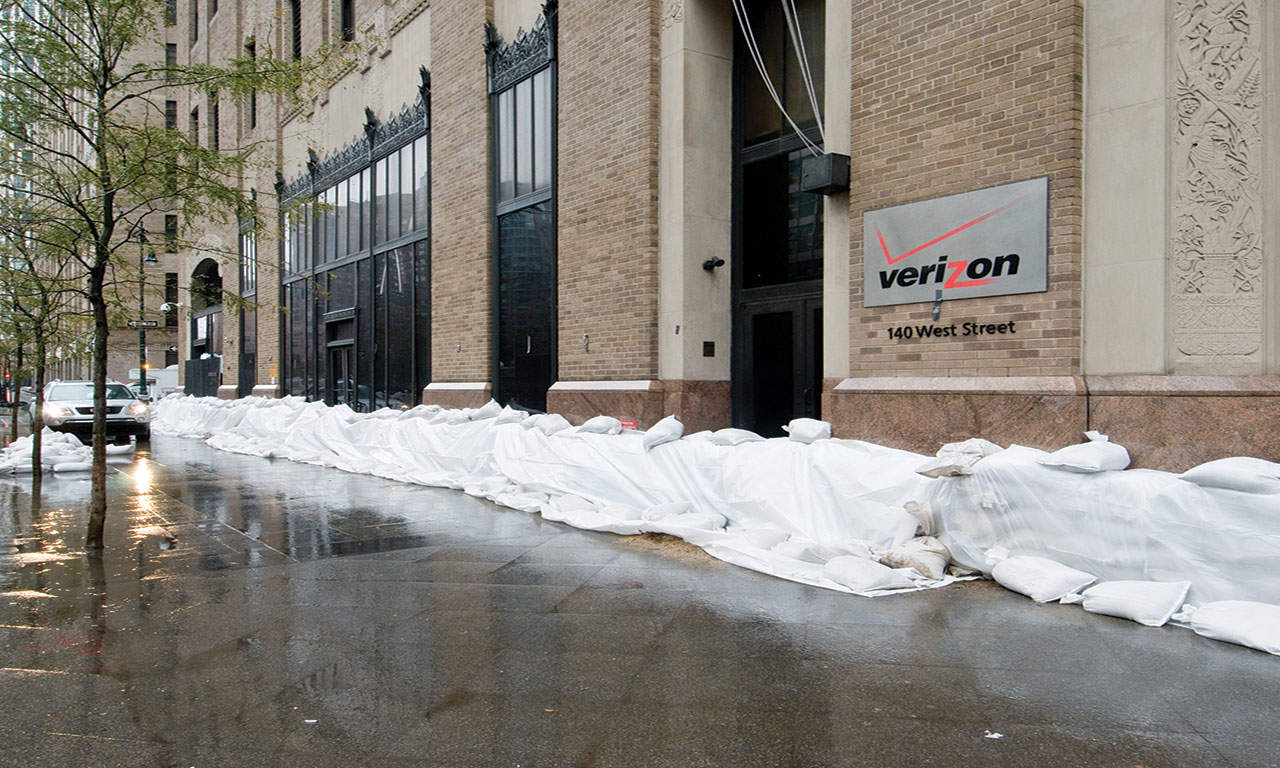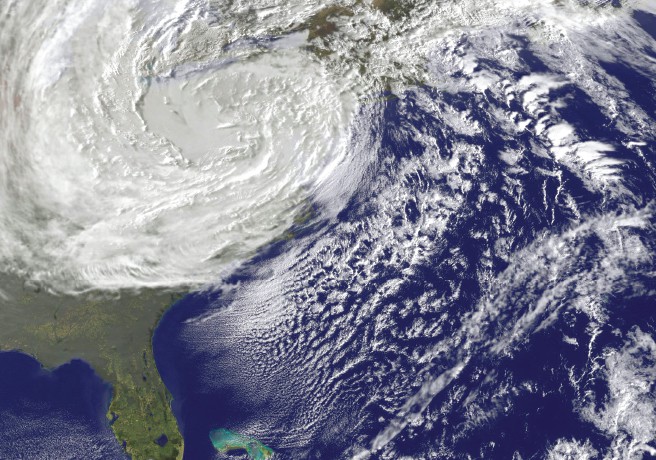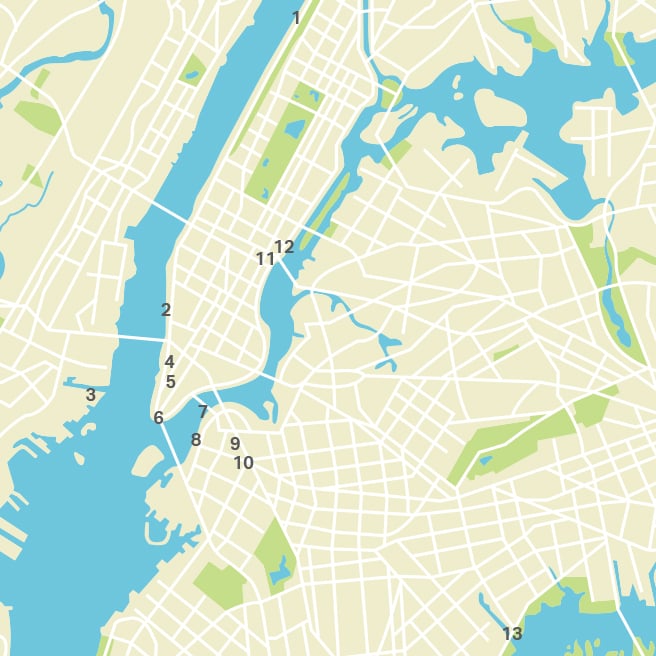Building back better
How do you grow city-wide resilience after a natural disaster? Exploring lessons learned from the US’s 2012 Hurricane Sandy, we speak to Dominic Veltri from Verizon Communications whose buildings were some of the worst hit by the storm, and to Jay Badame, president of AECOM’s Tishman Construction group, which supported Verizon and New York City before, during and after the catastrophic event.
As preparations were underway in New York in anticipation of Hurricane Sandy, no one could have guessed what was in store. The Category One storm saw New York City go into lockdown for days as the extreme event wrought its havoc. The devastation and loss of life were beyond any expectations.
Despite extensive preparations in the days before Sandy’s landfall, more than 50 of Verizon’s facilities in the New York metropolitan area were impacted by the storm. Teams from the construction operation AECOM Tishman worked alongside the company throughout the event from anticipating the storm, securing sites, having expertise on standby, managing emergency responses and then partnering during the following years on buildings and systems refurbishment.

Get expertise on board
“There is no playbook for events like Superstorm Sandy,” says Dominic Veltri, director of facilities engineering and construction at Verizon. “The best plan is to anticipate as many eventualities as possible and get expertise on site as soon as possible,” says Veltri.
As Sandy progressed, its enormity became apparent. “Our network is fully monitored and 100 per cent surveilled,” says Veltri. “We saw losses of commercial power and our facilities, as they are designed to do, transitioned to backup power systems. But as the storm intensified, we started to see additional failures on the backup power systems, largely due to widespread flooding and isolated fuel system failures.”
Lessons learned
Key Verizon buildings were exposed to some of the worst ravages of the storm on Lower Manhattan, including 140 West Street which stands as an example of the extensive repair and resilience measures that the company has undertaken. Much of the planning that went into protecting this building after the September 11 terrorist attack on the nearby World Trade Center proved to be effective.
Rooted in lessons learned, the building’s enhancements included moving sensitive and complex telecommunications; switching equipment to higher floors; raising chiller plants and backup generators above flood levels; and making modifications to key systems such as fuel oil to improve reliability during these types of events.
There were challenges too: New York City’s building code required fuel oil to be stored on the lowest level of a building due to fire concerns, and three subfloors full of water at the West Street building caused the fuel systems to fail. Within a few days, the building was back up and running on temporary systems. And subsequently, post Sandy, more design modifications have been added to the building:
- Cable drying systems (also known as compressor dehydrators) have been relocated to higher floors.
- A new fuel oil tank, reconstructed to withstand 100 feet (30 meters) of water pressure, has been installed.
- Fuel oil pumps are now housed in a waterpoof steel vessel also able to withstand 85 feet (26 meters) of water pressure and designed to operate in severe flooding conditions.
- All critical system components are now water submersible or engineered to operate as designed in another flood situation.
- A portable flood barrier that can be erected around the entire building on short notice was designed and constructed on commission from Verizon. All of these modifications were completed before the 2013 hurricane season.
Stronger than ever
Jay Badame, president and chief operating officer for AECOM Tishman in New York, New Jersey and Pennsylvania regions, believes the resiliency of New York City was never in doubt. “The city was going to bounce back and be stronger than before. In a time of climate change, we learn from the disaster and use it to prepare for the future,” says Badame.
As well as supporting Verizon, AECOM Tishman’s work included pumping out water from the flooded World Trade Center site to organising a crisis response team to perform housing inspections at command centres in the boroughs of Staten Island and Queens.
AECOM’s expertise and massive capacity is now being used by New York City to speed up its Build it Back program, and repair and rebuild 1,000 homes in Queens.
In addition, AECOM Tishman worked with long-term clients such as the Metropolitan Transit Authority, New Jersey Transit and the Port Authority of New York and New Jersey to restore service to such crucial parts of the transportation network as the New Jersey PATH trains, the New York City subway system, the Long Island Rail Road and NJ Transit, each of which was devastated by hurricane-related floods.
flexibility and innovative thinking are the key to resilience.
Regional planning is better
“There was an enormous benefit to be able to reach out across the broader region and, based on industry relationships, put equipment on the road long before purchase orders and contracts could be put in place,” adds Badame.
“Such regional disaster planning is essential in this day and age, and there is an ever growing need on the part of local government and agencies to assess potential risks for such events and, where possible, design for the same with permanent construction or quickly mobilised temporary protective devices.”
The old adage, “don’t let a good crisis go to waste” was fully embraced in the Sandy recovery. President Obama’s Hurricane Sandy Rebuilding Task Force coordinated the full authority and resources of the federal government, governors and mayors in the several states worked together to support an international competition to design resilient communities, and private sector companies like Verizon showed that flexibility and innovative thinking are the key to resilience.

NYC: Building tomorrow’s infrastructure today
Working with FEMA
In 2013, AECOM worked with the Federal Emergency Management Agency (FEMA) and New York City to review and develop flood insurance risk maps for the city’s 350 miles (563 kilometers) of shoreline over an intense three week period of work. Midway through the project, Hurricane Sandy hit. The team carried on, producing a new set of maps that took on an even greater sense of urgency. Nationally, we’ve helped the agency analyze the potential long-term implications of climate change on the National Flood Insurance Program (NFIP) developing an approach sensitive to regional needs.
AECOM also conducted 8,000 substantial damage evaluations on commercial and residential properties under our Hazard Mitigation Technical Assistance Program contract with the Federal Emergency Management Agency.
New York’s Wastewater Resiliency Plan
Working for New York City Department of Environment Protection (NYCDEP), this innovative program will see the US$200 million resiliency upgrade for the city’s 14 wastewater treatment plants and more than 50 pumping stations across the five boroughs.






